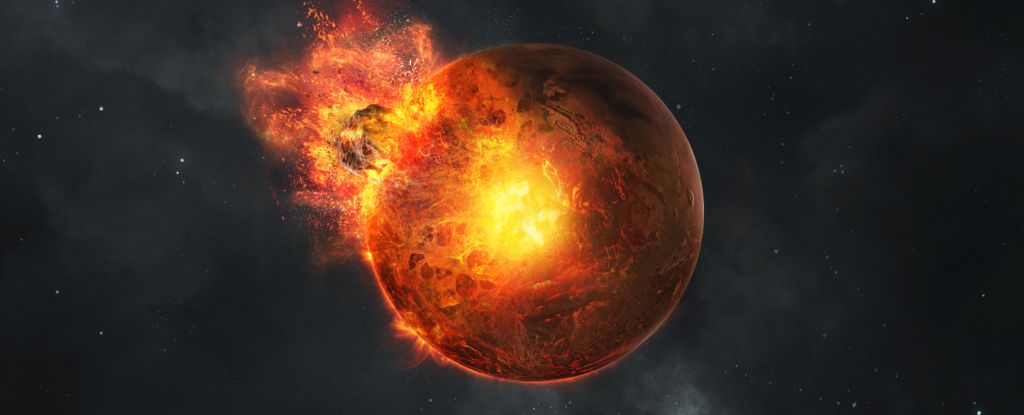
Recent findings reveal new insights into the interior of Mars, indicating that it is composed of large, fragmented pieces of ancient crust preserved within its mantle. This analysis stems from data collected by NASA’s InSight lander, which monitored seismic activity on Mars from 2018 to 2022. By studying the acoustic waves generated by marsquakes, scientists uncovered remnants of a violent history that bears resemblance to Earth’s early days of formation.
The research team, led by planetary scientist Constantinos Charalambous from Imperial College London, focused on seismic data from eight significant events to reconstruct the Martian mantle’s composition. Their findings suggest that massive rock fragments, some reaching up to 4 kilometers (2.5 miles) in size, are remnants from Mars’s formative years, approximately 4.5 billion years ago.
Insights into Mars’ Formation
During the early Solar System, Mars was subjected to chaotic conditions, with frequent collisions from large celestial objects. Similar to Earth, these violent impacts were pivotal in shaping the planet’s geology. According to Charalambous, “These colossal impacts unleashed enough energy to melt large parts of the young planet into vast magma oceans.” As these magma oceans cooled, they crystallized, leaving behind distinct chunks of material now detected deep inside Mars.
In contrast to Earth, where tectonic activity continually recycles crustal material, Mars has a single-piece crust that has remained relatively unchanged over billions of years. This preservation allows scientists to study the planet’s ancient geological history as if it were a time capsule.
The analysis indicates that after experiencing significant impacts, the Martian crust reformed, sealing the mantle and preserving these geological fossils. Charalambous notes that “most of this chaos likely unfolded in Mars’s first 100 million years,” highlighting the planet’s sluggish interior evolution compared to the dynamic processes observed on Earth.
Implications for Planetary Science
The discoveries made by this research have broader implications for understanding rocky planets within our Solar System. While Earth is unique in having a crust divided into tectonic plates, insights gained from Mars can help scientists explore the interiors of other planets like Mercury and Venus, which remain largely mysterious.
The research findings, published in the journal Science, emphasize the importance of identifying preserved ancient mantle characteristics on Mars. This provides an unprecedented view into the geological history and thermochemical evolution of terrestrial planets under a stagnant lid, a tectonic regime that prevails in our Solar System.
Understanding how rocky bodies evolve is crucial for assessing their potential habitability. The identification of preserved geological features on Mars offers a unique perspective on the preconditions necessary for life beyond Earth. As Charalambous and his team conclude, these insights could reshape our understanding of planetary formation and the conditions that allow for life to thrive throughout the cosmos.







